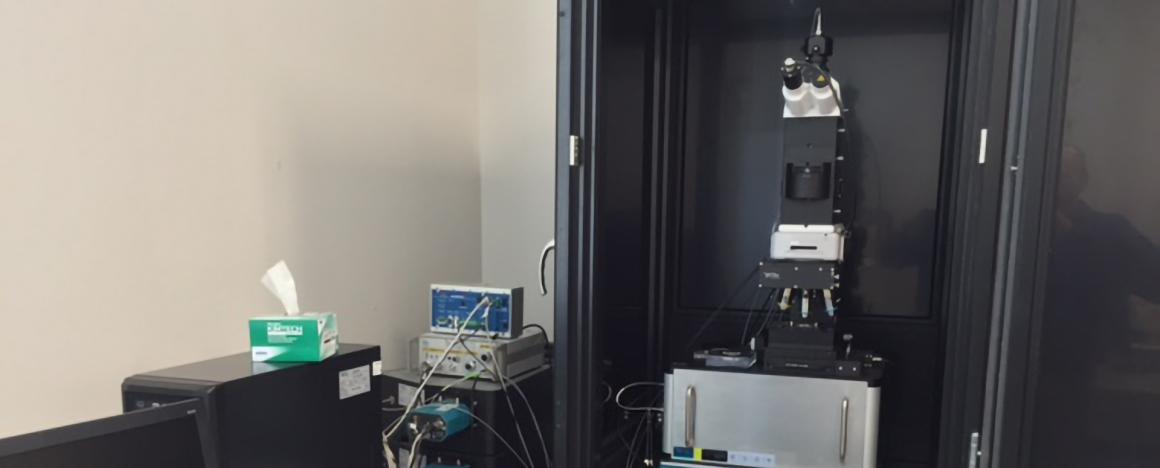About the Facility

The Tufts Materials Micro Characterization Facility utilizes a state-of-the-art integrated Raman-AFM-SNOM-TERS-Lifetime System (Alpha 300R+ Raman System) by WITec Instruments Corp. to measure material and stress information, physical parameters, optical parameters at the sub-diffraction limit, and lifetime of optical excitation at the same location of a sample surface.
The instrument consists of four integrated parts: a confocal Raman imaging spectrometer, an atomic force microscope (AFM), a near-field optical microscope, and a time-correlated single photon counter. These parts measure a unique synergistic combination of material parameters, making the instrument an unparalleled platform for many applications and users.
The ability to collect multiple parameters from the same area of a surface opens new channels for understanding of surface properties. For example, the research activity proposed deals with a synergistic combination of AFM (the ability to measure local forces) and Raman spectroscopy (the ability to identify chemical and stress signatures). Using this combination, one can directly measure the correlation of the distribution of surface charges and the absorbance of specific molecules and nanoparticles to that surface.
Furthermore, the AFM aspect substantially enhances the spatial resolution of the Raman mapping by using a combination with AFM through the tip-enhanced Raman spectroscopy (TERS). The option of single-photon sensitivity and ability to measure life-time of radiated light allow not only luminescent life-time mapping but also the separation of true Raman and (sometimes Raman-look) fluorescent signals, which is important for quantitative measurements.
The facility also utilizes a iNano Ambient Nanoindenter System by Nanomechanics, Inc. The nanomechanical actuator is a force generation mechanism combined with a displacement sensor. The force is generated electromagnetically. The displacement is sensed capacitively. The specifications are:
- Displacement measurement: capacitive gauge
- Displacement range: 50 microns
- Displacement resolution (electronic): 0.02 nm
- Typical noise < 0.1 nm
- Load application: coil/magnet
- Maximum Load: 50 mN
- Load resolution: 3 nN
- Typical Noise < 200 nN
- Loading column mass: < 150mg
- Typical indenter normal stiffness: 80 N/m
- Damping coefficient: 0.05 N-s/m
- Typical resonant frequency: 120 Hz
The Control Software provides for all aspects of instrument control, test design, reporting and data manipulation/analysis. A high performance CPU is included, which interfaces with the controller via USB. Integrated video-microscope is included with a 800x optical microscope with digital zoom. - Continuous Dynamic Measurement: Superimposes an oscillatory force on the Actuator load signal and measures the resultant displacement oscillation to provide a continuous measurement of the measured stiffness of the system. This data can be used to determine a continuous modulus or hardness, or a continuous contact stiffness. The ability to operate at different frequencies, load amplitudes, or displacement amplitudes allows the use in a dynamic- mechanical analysis mode to provide storage and loss modulus and tan- delta.
This facility was created with the support of the National Science Foundation, MRI Grant CBET-1428919 and Massachusetts Technology Collaborative Grant (507278-78050).